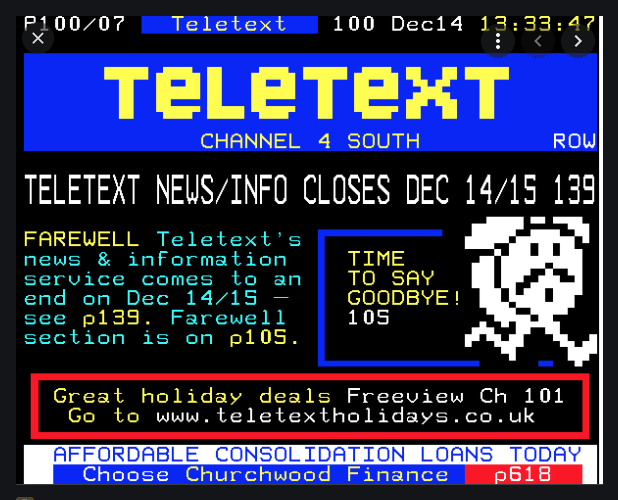
Slide title
Write your caption hereButton
Teletext, or broadcast teletext, is a videotex standard for displaying text and rudimentary graphics on television sets equipped with a teletext decoder. Teletext sends data embedded in the broadcast signal, hidden in the invisible vertical blanking interval VBI between screens. The decoder, which was engineered in Japan by Matsuchita/Panasonic, buffers this information as a series of "pages". The user can switch from watching TV to obtaining specific localized information; selecting instant news or weather or games by displaying chosen pages using a remote control.
This teletext service was developed in house from 1982 at Time Inc by a small group of engineers, media pioneers and news junkies over a period of a year. Market tests in NY, CA and FL followed for a subscription service offered to cable customers. Simultaneously, a videotext service was tested, offering a far deeper data base of information with two-way access via telephone or cable. Live research found that notice boards, online shopping, and video games were the popular uses, the real drivers of usage of these novel services—as was later borne out by Facebook, by Amazon, and by the appetite for video games.
Monica was hired as head of strategy for TVIS, the incubator of digital services. She developed the product outlines, the pricing parameters, the hardware strategy, and business models for teletext and videotext; and later, video games. Monica realized and presented to Time Inc’s leadership the extraordinary advertising potential of teletext and videotext, projecting billions of dollars siphoned off from established media such as magazines, newspaper classifieds and local television. The technology and content needed more work and market testing to achieve a fully-fledged product, but Video Group leadership cancelled the experiment. Instead of developing in-house, AOL was bought for a billion dollars.

